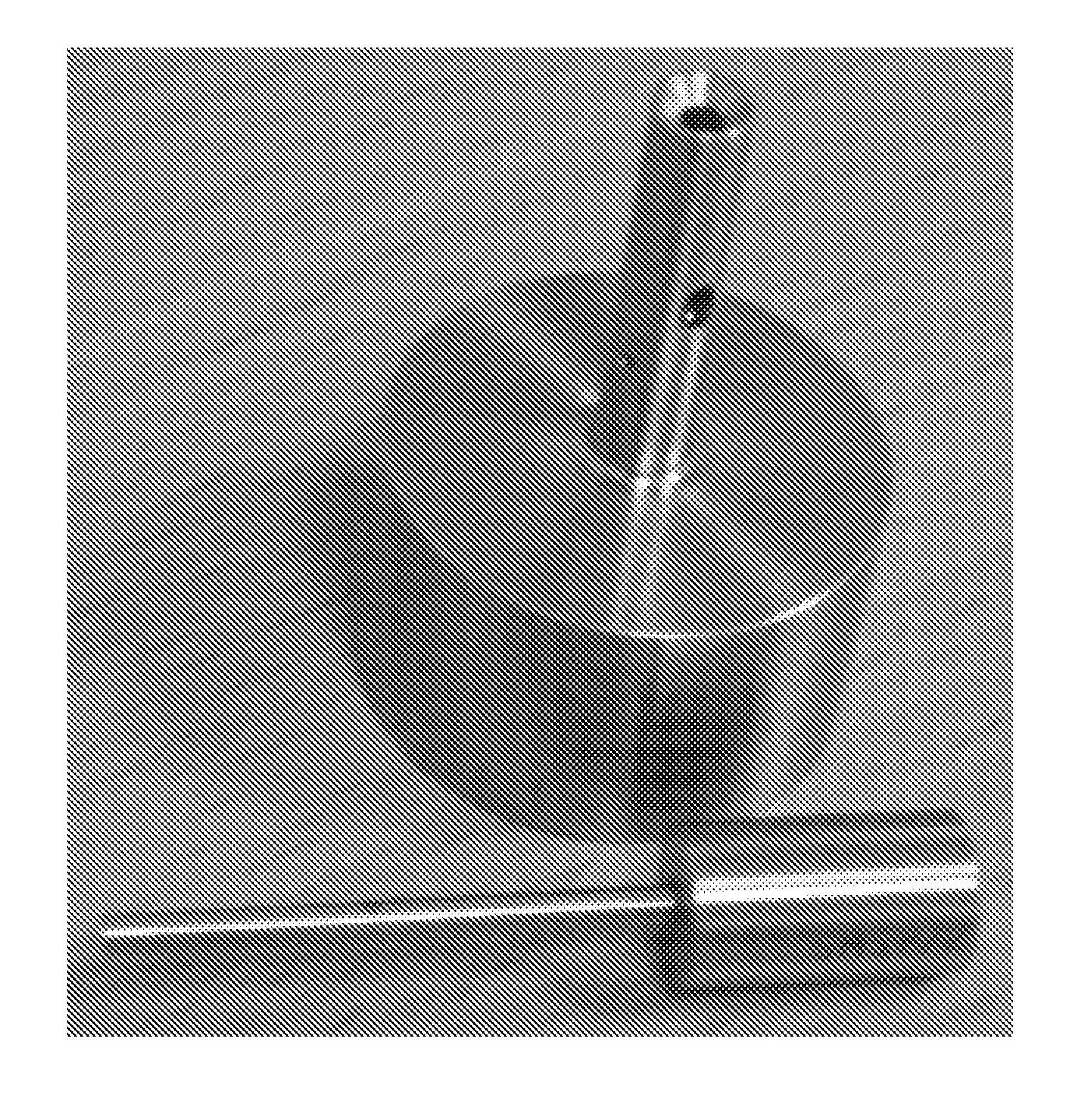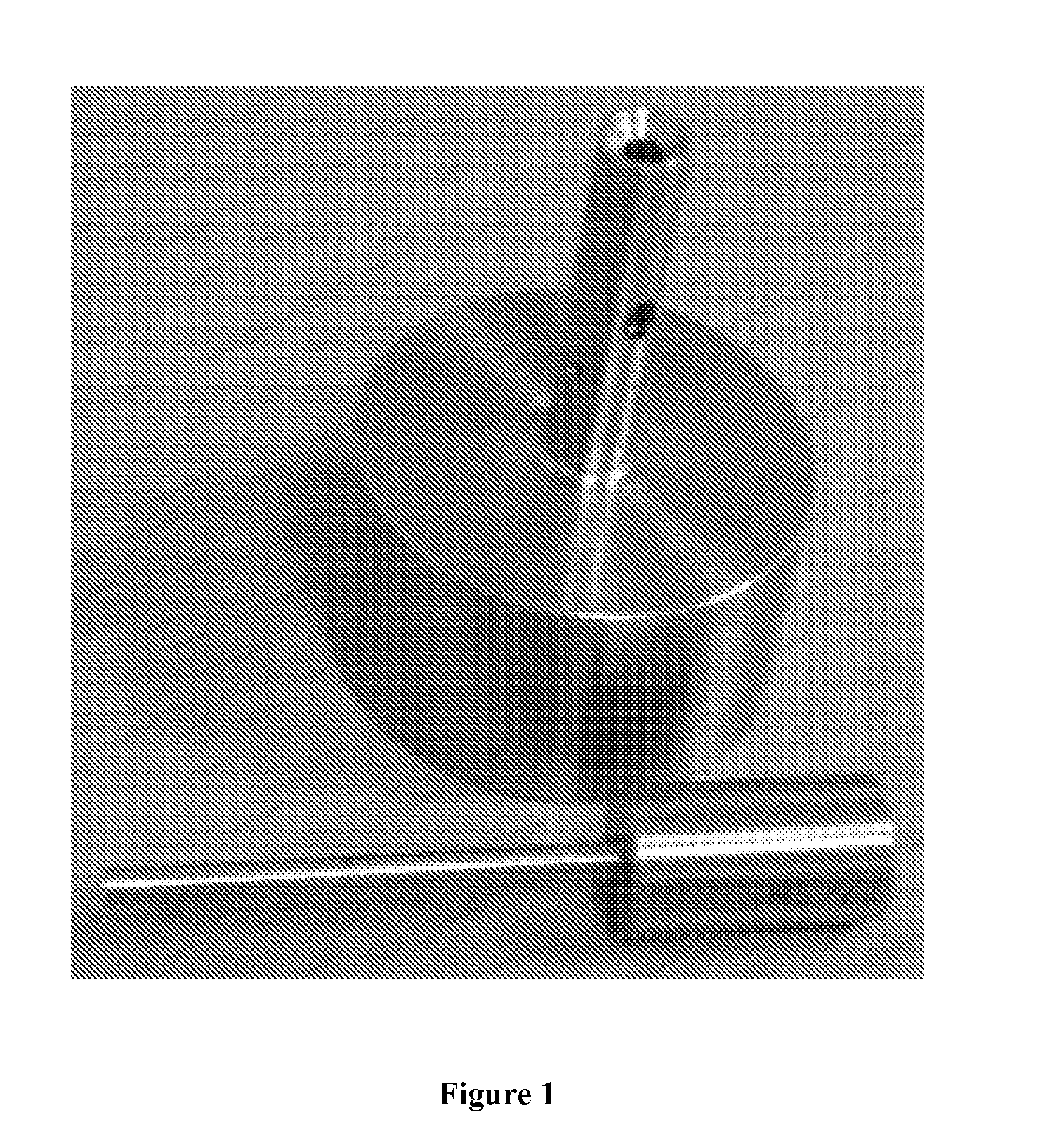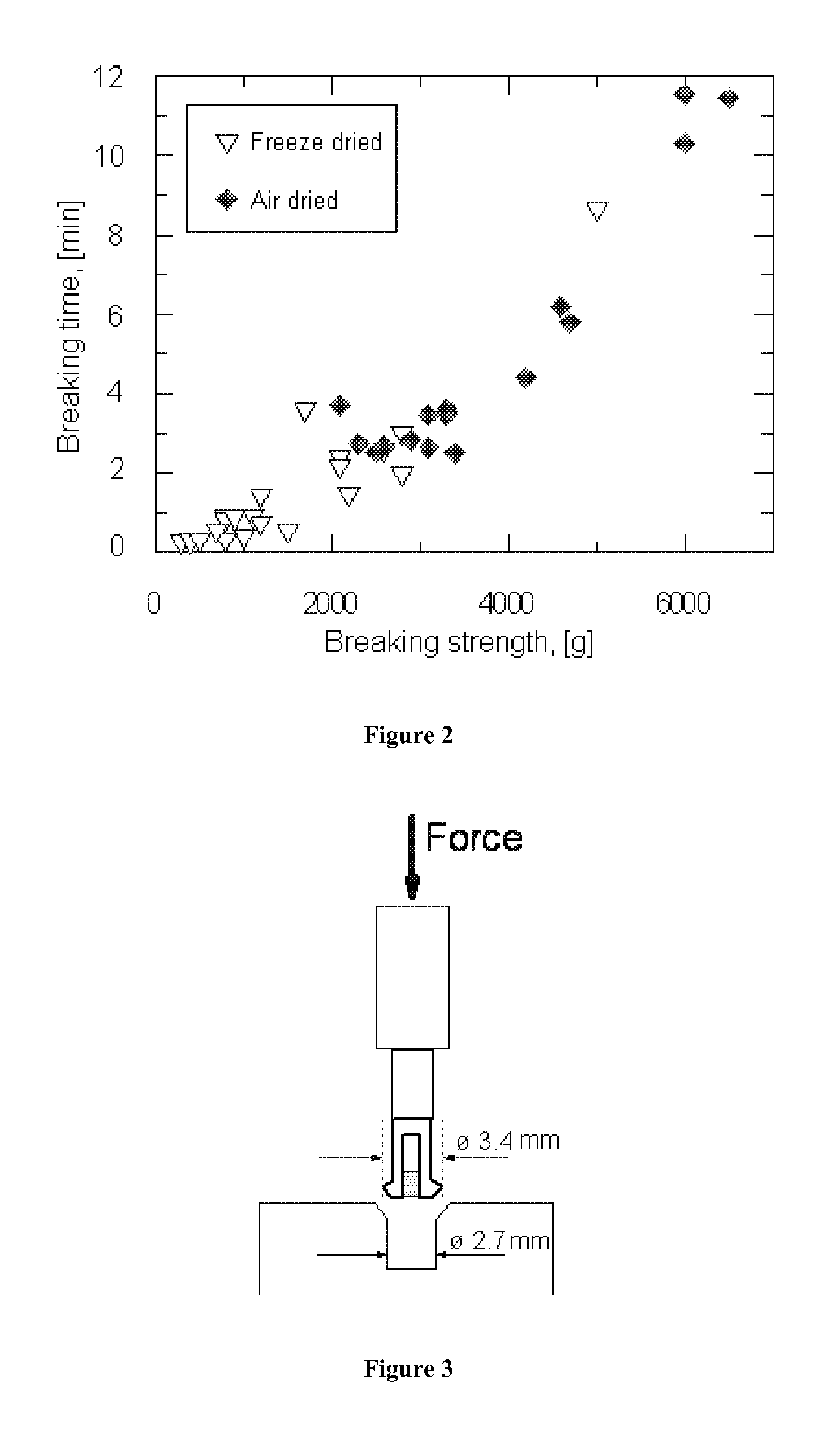Biopolymer Based Implantable Degradable Devices
- Summary
- Abstract
- Description
- Claims
- Application Information
AI Technical Summary
Benefits of technology
Problems solved by technology
Method used
Image
Examples
example 1
[0077]5.54 grams of alginate, LN-8 (Lessonia Nigrescens alginate), was mixed with 6.2 grams deionized water in a mortar until a uniform rubber-like paste was formed. This paste had a calculated moisture content of 54%. Some of the mixing was done by hand due to the very high viscosity of the mixture. When the paste appeared homogeneous under visual inspection, part of the mass was molded into a screw-like shape using a nut. The nut was packed / filled with the alginate mass as compact as possible and left for drying at 25° C. and 35% RH. After drying, the device shrank to a volume that permitted the device to be withdrawn from the mold without rotating it. The threads appeared the same as regular threads on a screw.
example 2
[0078]5.9 grams alginate (LN-8) and 7.6 grams water was mixed in similar manner as in Example 1, and the resulting paste had a calculated moisture level of 61%. The paste was then extruded through a 9 millimeter nozzle to form pins. The pins were left for drying on bench at 25° C. and 35% relative humidity. After drying, the pins had a diameter of 6.58 millimeters, and a dry matter content of 94.2%. One pin was measured on a SMS Texture Analyzer, TA-XTi, applying two different methods and probes.
[0079]First, a guillotine probe was used, where a sharp axe-like probe compresses the sample towards a slit of 3.2 millimeters oriented transversely to the pin. In this test, the pin survived the maximum load, which was 40 kilograms.
[0080]In the second test, the pin was attached between two probes, each with a clamp, fastening the pin in a vertical direction. The instrument then measured force in tension of the sample before it breaks. Again, no breakage was seen at the maximum tension force...
example 3
[0081]This example demonstrates that shrinkage of extruded biopolymer pastes varies depending on the paste formulation.
[0082]Eight different formulations were tested with variations in the type of raw material employed, including blends of different raw materials. The amount of water added was kept to a minimum ensuring a homogeneous paste. The extruded materials were made by first mixing the biopolymer powders, if more than one biopolymer powder was used, and then water was added and a uniform paste was made using a mortar and pestle. The paste was then filled into a plastic syringe (20 milliliters), and force was applied by hand to compress the material before the paste was extruded through a 7.5 millimeter diameter outlet. The extruded plugs were dried, uncovered, at ambient temperature for three days.
[0083]The different formulations and the diameters of the dried material are presented in Table I. The alginates and chitosans, named PRONOVA and PROTASAN, respectively, are availab...
PUM
| Property | Measurement | Unit |
|---|---|---|
| Percent by mass | aaaaa | aaaaa |
| Percent by mass | aaaaa | aaaaa |
| Density | aaaaa | aaaaa |
Abstract
Description
Claims
Application Information
 Login to View More
Login to View More - R&D
- Intellectual Property
- Life Sciences
- Materials
- Tech Scout
- Unparalleled Data Quality
- Higher Quality Content
- 60% Fewer Hallucinations
Browse by: Latest US Patents, China's latest patents, Technical Efficacy Thesaurus, Application Domain, Technology Topic, Popular Technical Reports.
© 2025 PatSnap. All rights reserved.Legal|Privacy policy|Modern Slavery Act Transparency Statement|Sitemap|About US| Contact US: help@patsnap.com



